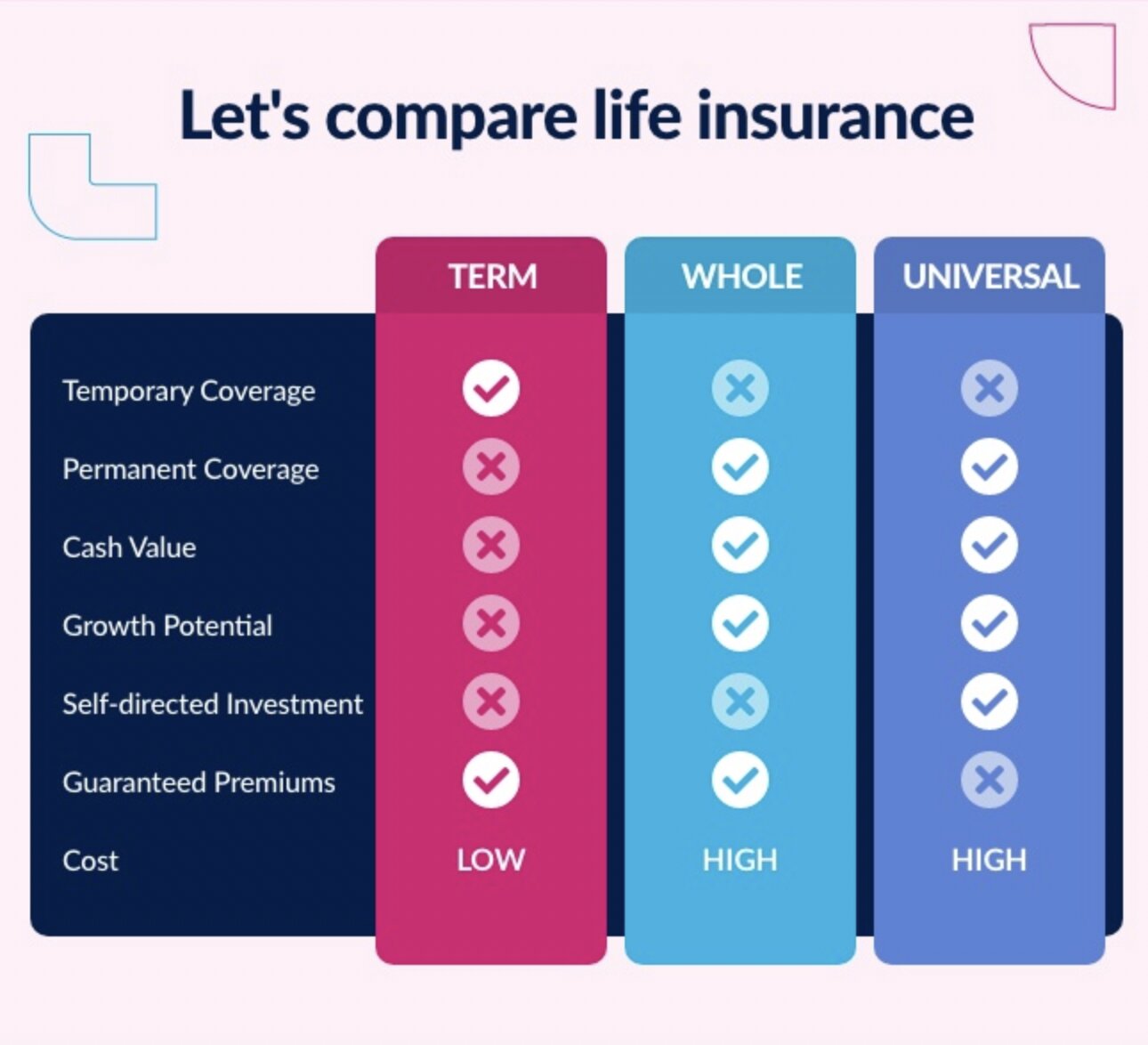

Finance
How To Sell Business Insurance
Modified: December 30, 2023
Learn the best strategies for selling business insurance in the competitive finance market. Boost your sales with our expert tips and tools.
(Many of the links in this article redirect to a specific reviewed product. Your purchase of these products through affiliate links helps to generate commission for LiveWell, at no extra cost. Learn more)
Table of Contents
Introduction
Welcome to the world of business insurance sales! As an insurance agent, it’s essential to not only understand the ins and outs of the industry but also to develop a comprehensive sales strategy that is driven by the needs and concerns of potential customers. Selling business insurance requires a deep knowledge of products and services, as well as the ability to effectively communicate the value they bring to entrepreneurs and business owners.
In today’s fast-paced and unpredictable business landscape, having insurance coverage has become a necessity for businesses. From protecting assets and property to safeguarding against liability and legal claims, business insurance offers peace of mind to entrepreneurs who need to focus on running their operations without undue worry.
The potential customer base for business insurance is vast and varied, ranging from small startups to large corporations across various industries. Each business has its own unique risks and exposures, making it essential for insurance agents to adapt their sales approach to cater to the specific needs of each prospect.
In this guide, we will walk you through the key steps and strategies to effectively sell business insurance. Whether you are an experienced agent looking to refine your skills or someone new to the industry, this article will provide you with valuable insights and tactics to boost your sales performance.
Throughout this journey, we’ll explore the importance of understanding different types of business insurance, identifying your target customers, building a solid sales strategy, overcoming objections, closing the sale, and providing ongoing support. By mastering these aspects, you’ll be better equipped to offer the right insurance solutions that meet the needs of your prospective clients.
So, let’s dive in and explore the world of business insurance sales!
Understanding Business Insurance
Before diving into the sales process, it’s crucial to have a solid understanding of the different types of business insurance policies that are available. Business insurance is a broad term that encompasses various coverage options designed to protect businesses from potential financial losses.
One of the most common types of business insurance is general liability insurance, which provides coverage for third-party bodily injury, property damage, and personal injury claims. This policy is crucial for businesses that interact with customers, suppliers, or the general public.
Property insurance is another vital coverage option, as it protects a business’s physical assets from damage or loss due to fire, theft, vandalism, or other covered perils. This policy typically covers buildings, equipment, inventory, and even business interruption losses.
Professional liability insurance, also known as errors and omissions insurance, is essential for businesses that provide professional services or advice. This coverage protects against claims of negligence, errors, or omissions that result in financial losses for clients.
Workers’ compensation insurance is mandatory in most jurisdictions and provides coverage for employee injuries or illnesses that occur in the workplace. It covers medical expenses, lost wages, and rehabilitation costs, ensuring that employees are protected and the business complies with legal requirements.
Other types of business insurance include commercial auto insurance, which covers vehicles used for business purposes, product liability insurance that protects against claims arising from product defects or injuries, and cyber liability insurance to safeguard against data breaches and cyber-attacks.
As an insurance agent, it’s important to educate yourself about the specific risks that businesses in your target market face. This will enable you to recommend the appropriate coverage options and provide tailored solutions that address their individual needs.
By understanding the intricacies of business insurance and being able to clearly explain the benefits and coverage limits of various policies, you will position yourself as a trusted advisor to potential clients. This knowledge will also help you differentiate your offerings from competitors and build a reputation as a knowledgeable and reliable insurance professional.
Now that we have covered the basics of business insurance, let’s move on to identifying your target customers.
Identifying Target Customers
Identifying your target customers is a critical step in selling business insurance effectively. Understanding the characteristics, needs, and pain points of your ideal clients will allow you to tailor your sales approach and offer the most relevant insurance solutions. Here are some key factors to consider when identifying your target customers:
- Industry: Determine which industries are most likely to require business insurance. For example, construction companies, manufacturing firms, and healthcare providers are just a few examples of industries that often have high insurance needs.
- Company Size: Consider the size of the businesses you want to target. Small businesses may require different insurance products compared to larger corporations.
- Geographic Location: Assess the geographic areas where your target customers are located. Local businesses may have different insurance requirements compared to those in metropolitan areas.
- Business Operations: Understand the nature of your potential clients’ operations. Are they primarily involved in manufacturing, retail, or professional services? Different industries have unique risks and insurance needs.
- Existing Coverage: Determine if potential customers already have any insurance coverage in place. This will help you understand their current needs and identify any gaps in their coverage.
Additionally, it’s important to consider any changes or emerging trends in the business landscape that may impact insurance requirements. For example, the rise of remote work and increased cybersecurity threats have led to a greater demand for cyber liability insurance.
Once you have identified your target customers, conduct market research to gather insights on their pain points, challenges, and preferences. This can be done through surveys, interviews, or by leveraging industry reports and data. Understanding the specific needs and concerns of your target audience will enable you to position your insurance products as solutions that address their unique situations.
By narrowing down your target customers, you can focus your sales efforts more effectively. This includes tailoring your messaging, choosing the right marketing channels, and allocating your resources to reach the right audience. Remember, the more targeted your approach, the higher your chances of success in selling business insurance.
Now that you have a clear understanding of your target customers, let’s move on to building an effective sales strategy.
Building an Effective Sales Strategy
Building a solid sales strategy is essential for success in selling business insurance. It involves identifying your objectives, developing a comprehensive plan, and implementing effective tactics to reach and convert potential customers. Here are key steps to consider when building your sales strategy:
- Set Clear Goals: Start by defining your sales goals. What do you want to achieve? Is it increasing the number of new clients, increasing policy renewal rates, or improving cross-selling opportunities? Having clear goals will help guide your strategy and measure your progress.
- Know Your Unique Selling Proposition: Determine what sets your insurance offerings apart from competitors. Identify your unique value proposition and use it to differentiate yourself in the market. Whether it’s exceptional customer service, specialized industry expertise, or comprehensive coverage options, make sure to highlight these key selling points.
- Create a Targeted Marketing Plan: Develop a marketing plan that aligns with your target customers and goals. Identify the most effective channels to reach your audience, such as digital marketing, industry events, or networking. Utilize a mix of strategies, including content marketing, social media, and targeted advertising, to create awareness and generate leads.
- Build Relationships: Insurance sales often rely on building strong relationships with clients. Foster trust and credibility by actively engaging with potential customers, providing valuable insights, and offering personalized solutions. Regularly follow up with leads and existing clients to nurture these relationships and demonstrate your commitment to their success.
- Continuously Educate Yourself: Stay up to date with the latest trends, regulations, and changes in the insurance industry. Continuous learning will enhance your expertise and allow you to provide valuable advice to clients. Attend industry conferences, join relevant professional associations, and participate in webinars or training programs to expand your knowledge.
- Utilize Technology: Leverage technology tools and resources to streamline your sales process. This can include CRM (Customer Relationship Management) systems to manage customer data and streamline communication, quoting tools to provide accurate and timely quotes, and digital platforms to enhance the efficiency of your operations.
- Measure and Track Performance: Regularly assess the success of your sales strategy by measuring key performance indicators (KPIs). This can include metrics such as lead conversion rates, policy renewal rates, and customer satisfaction ratings. Use these insights to refine your strategy and make data-driven decisions.
By focusing on these key elements and developing a comprehensive sales strategy, you’ll be well-equipped to effectively sell business insurance. Remember, each step should be tailored to your specific target customers and their unique needs.
Next, we will explore the step-by-step process of selling business insurance.
Steps to Sell Business Insurance
To successfully sell business insurance, it’s important to follow a structured process that takes potential customers from initial contact to closing the sale. Here are the key steps to consider:
- Research and Prepare: Before reaching out to potential clients, conduct thorough research on their business, industry, and insurance needs. This will allow you to tailor your approach and demonstrate your knowledge and understanding of their unique situation.
- Contact Prospects: Initiate contact with potential customers through various channels, such as phone calls, emails, or networking events. Introduce yourself, clearly communicate the purpose of your outreach, and offer to provide valuable insights or a no-obligation consultation.
- Assess Insurance Needs: Engage in in-depth conversations with prospects to understand their specific risks, liabilities, and coverage requirements. Ask open-ended questions and actively listen to their responses. This will enable you to identify potential gaps in their existing coverage and recommend the most suitable insurance solutions.
- Present Customized Solutions: Based on your assessment of the prospects’ needs, present customized insurance solutions that address their specific risks and concerns. Clearly explain the coverage options, limits, and benefits of each policy, and how they align with the prospect’s business objectives.
- Provide Clarity on Pricing and Terms: Transparently discuss the pricing, deductibles, and payment terms associated with the insurance policies you are recommending. Help the prospect understand the value they will receive for their investment and address any concerns or questions they may have.
- Address Objections: It’s common for prospects to have objections or concerns about purchasing insurance. Listen empathetically to their objections, validate their concerns, and provide clear and informative responses. Address any misconceptions, offer additional information if needed, and emphasize the importance of having comprehensive coverage.
- Negotiate and Finalize: Work collaboratively with the prospect to address any pricing or coverage concerns. If necessary, be open to negotiating terms to find a mutually beneficial solution. Once an agreement is reached, guide the prospect through the application and underwriting process, ensuring all necessary paperwork is completed accurately and efficiently.
- Review and Confirm: Before finalizing the sale, thoroughly review the policy details with the prospect, making sure they understand the coverage, exclusions, and any endorsements. Confirm their acceptance of the policy and address any final questions or concerns they may have.
- Follow-Up and Provide Ongoing Support: After the sale is complete, maintain regular communication with clients to provide ongoing support and address any additional insurance needs that may arise. Stay proactive in providing valuable information, conducting policy reviews, and offering renewal reminders to maintain long-term relationships.
Throughout the selling process, it’s crucial to be responsive to prospects’ needs, provide exceptional customer service, and demonstrate your expertise. By following these steps, you will establish yourself as a trusted advisor and increase your chances of closing the sale.
Next, let’s discuss how to overcome common objections often encountered when selling business insurance.
Overcoming Common Objections
When selling business insurance, it’s common for potential clients to have objections or concerns that may hinder the sales process. As an insurance agent, it’s crucial to address these objections effectively and provide reassurance to help prospects make informed decisions. Here are some common objections and strategies to overcome them:
- Cost: One of the most common objections is the perceived high cost of insurance. To address this concern, emphasize the value and protection that insurance provides. Highlight the potential financial losses that businesses could face without adequate coverage and showcase how insurance premiums are a wise investment in mitigating those risks.
- Unperceived Risk: Some prospects may believe that their business is not at risk or that their current coverage is sufficient. Educate them about the potential threats their specific industry faces and provide examples of claims that businesses like theirs have experienced. Emphasize the importance of comprehensive coverage that addresses their unique risks.
- Misunderstanding of Coverage: Prospects may have misconceptions about what their insurance policy covers or doesn’t cover. Take the time to explain their policy in detail and address any perceived gaps. Provide real-life scenarios to showcase how specific coverage options can protect their business in various situations.
- Trust and Credibility: Some prospects may have concerns about the reliability or trustworthiness of insurance providers. Build trust by sharing testimonials, case studies, or references from satisfied clients. Highlight your experience, industry knowledge, and any professional certifications or affiliations that demonstrate your expertise.
- Change and Complexity: The process of obtaining and managing insurance policies can sometimes be perceived as complicated or burdensome. Simplify the process by guiding prospects step-by-step, offering personalized support, and utilizing technology tools that streamline paperwork and communication. Emphasize your commitment to providing ongoing assistance and making the experience seamless for them.
- Unfamiliarity with Insurance: Some prospects may be unfamiliar with insurance terminology or concepts. Use clear and simple language to explain policy details and benefits. Offer educational resources, such as brochures or online materials, to help them understand the basics of business insurance and its importance.
When faced with objections, it’s essential to actively listen, empathize with the prospect’s concerns, and respond with thoughtful and informative answers. Tailor your responses to address their specific objections and provide relevant examples or statistics to support your points.
Remember, objections present an opportunity to educate prospects further and highlight the value and benefits of your insurance products. By addressing objections effectively, you can build trust, alleviate concerns, and move the sales process forward.
Now, let’s move on to the pivotal step of closing the sale.
Closing the Sale
Closing the sale is the culmination of your efforts in selling business insurance. It’s the critical step where you bring all the pieces together and secure a commitment from the prospect to purchase the insurance coverage you have recommended. Here are some strategies to effectively close the sale:
- Create a Sense of Urgency: Encourage the prospect to take action by emphasizing the importance of protecting their business immediately. Highlight potential risks and the consequences of not having adequate coverage. Offer limited-time promotions or discounts to create a sense of urgency.
- Reiterate the Value: Remind the prospect of the benefits and value they will receive by having the insurance coverage you are offering. Reinforce how it will protect their business, assets, and employees, and provide peace of mind in the face of potential risks and liabilities.
- Address Remaining Objections: If any objections or concerns are still lingering, address them directly and provide additional information or clarifications. Show empathy and understanding, and offer solutions or alternatives to alleviate their concerns.
- Offer Flexible Payment Options: To make the purchase more feasible for the prospect, provide flexible payment options such as monthly installments or customized payment plans. This can help overcome any financial barriers and make the insurance coverage more accessible.
- Present a Clear Call to Action: Clearly outline the next steps for the prospect to move forward with the purchase. Provide the necessary paperwork and guide them through the application process. Set specific deadlines and expectations to keep the sales process on track.
- Ask for the Commitment: To close the sale, confidently ask for the prospect’s commitment to move forward with the insurance coverage. This can be done by presenting a proposal or application form and asking them to sign or provide the required information.
- Follow up: After securing the commitment to purchase, proactively follow up with the prospect to ensure a smooth transition through the underwriting and policy issuance process. Keep them informed of the progress and provide any necessary assistance to complete the sale.
Remember, closing the sale is about building trust, addressing objections, and guiding the prospect towards a confident decision. By effectively utilizing these strategies and maintaining a customer-focused approach, you can increase your success rate in closing business insurance sales.
Now that the sale is closed, let’s discuss the importance of providing ongoing support to your clients.
Providing Ongoing Support
Providing ongoing support to your clients is essential for building strong and long-lasting relationships, as well as ensuring their satisfaction and retention. Here are key strategies to offer continuous support to your business insurance clients:
- Policy Reviews: Regularly review your clients’ insurance policies to ensure they have appropriate coverage for their evolving needs. Schedule policy review meetings to discuss any changes in their business, industry, or regulations that may require adjustments to their coverage.
- Proactive Communication: Stay in regular contact with your clients and be proactive in addressing their questions, concerns, or any updates related to their policies. This can be done through phone calls, emails, newsletters, or personalized messaging.
- Claims Assistance: If your clients need to file a claim, offer guidance and support throughout the process. Advocate for them with the insurance company and facilitate prompt resolution. Keep them informed of the progress and provide updates on the status of their claim.
- Risk Management Resources: Share valuable resources, such as risk management guides, best practices, and industry-specific insights, to help your clients reduce potential risks and liabilities. This positions you as a trusted advisor and shows your commitment to their success.
- Renewal Reminders: Send timely reminders to your clients about upcoming policy renewals. Keep them informed about any changes in coverage, pricing, or terms, and provide them with options to modify or update their policies as needed.
- Continued Education: Offer educational content and workshops to keep your clients informed about the latest industry trends, regulatory changes, and risk management strategies. This positions you as a knowledgeable resource and helps them stay proactive in protecting their businesses.
- Exceptional Customer Service: Strive to deliver exceptional customer service at all times. Be responsive, attentive, and professional in your communications. Address any concerns or complaints promptly and go the extra mile to exceed your clients’ expectations.
- Referral Programs: Encourage your satisfied clients to refer your services to others. Offer incentives or rewards for successful referrals. This not only helps you expand your client base but also showcases the trust and satisfaction your clients have in your services.
By providing ongoing support, you demonstrate your commitment to your clients’ success and reinforce your role as a trusted insurance advisor. This helps build long-term relationships, foster loyalty, and increase the likelihood of policy renewals and referrals.
Remember, each client is unique, so tailor your support to their specific needs and preferences. By continuously delivering value and support, you position yourself as a partner in their business journey.
As we conclude this guide, we hope you now have a solid understanding of how to sell business insurance effectively, from understanding the types of coverage to identifying target customers, building a sales strategy, overcoming objections, closing the sale, and providing ongoing support. With this knowledge and the implementation of these strategies, you can succeed in the competitive world of business insurance sales. Best of luck!
Conclusion
In the realm of business insurance sales, understanding the products and services is just the beginning. To excel in this field, you must also possess comprehensive knowledge of your target customers, develop a strong sales strategy, overcome objections, close sales effectively, and provide ongoing support to your clients. By following the steps outlined in this guide, you’ll be equipped to navigate the intricacies of selling business insurance with confidence and success.
Remember that selling business insurance is not simply about pushing policies onto potential customers. It’s about understanding their unique risks and needs, and offering tailored solutions that provide peace of mind and protection. By demonstrating your expertise, building trust, and showcasing the value of insurance coverage, you can effectively help businesses safeguard their assets and navigate potential challenges.
Throughout the sales process, don’t forget the importance of communication, empathy, and proactive support. Listen to your clients, address their concerns, and provide ongoing assistance to ensure their satisfaction and promote long-term relationships. By nurturing these relationships, you can increase retention rates and generate valuable referrals, fueling the growth of your business.
Lastly, always strive for continuous learning and improvement. Stay abreast of industry trends, regulations, and emerging risks. Enhance your knowledge and skills through professional development opportunities. Embrace technology tools that can streamline your operations and enhance the customer experience. By staying ahead of the curve, you’ll position yourself as a trusted advisor and stay competitive in the ever-evolving world of business insurance sales.
Now, armed with this comprehensive guide, it’s time to put your knowledge into action. Best of luck on your journey to becoming a successful business insurance sales professional!














